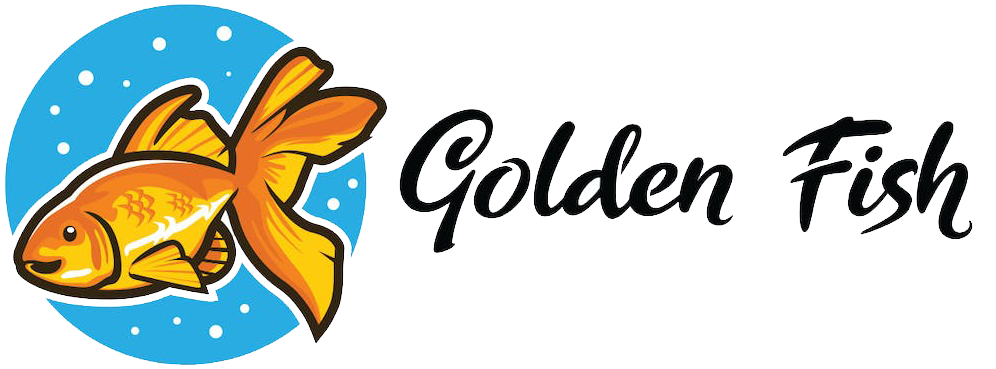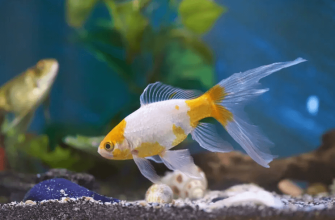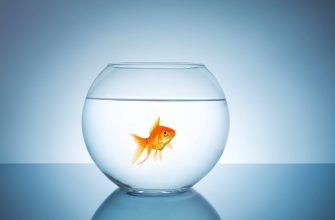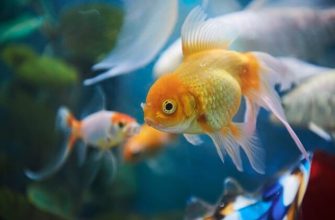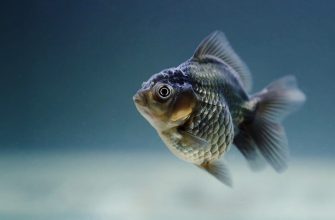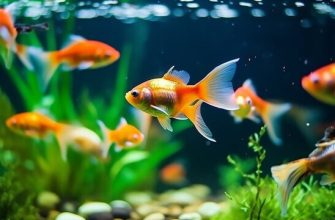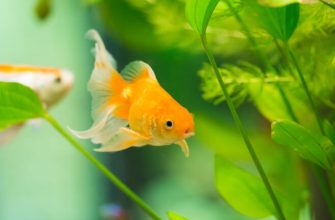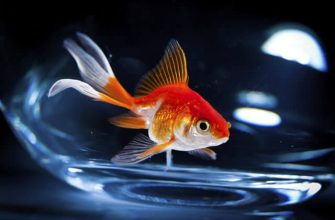Goldfish are some of the most popular pet fish, with over 150 million kept as pets in the United States alone. While they may seem simple, goldfish require proper care to thrive – including a balanced diet. One question many aquarium owners have is whether goldfish eat the algae that frequently grows in tanks.
The short answer is yes, goldfish do eat some types of algae. Algae can be an important part of their diet when consumed in moderation. However, not all algae is created equal. Too much algae growth can be detrimental, and owners need to strike a balance in their tanks.
In this article, we’ll take a deeper look at the relationship between goldfish and algae. We’ll cover the benefits and risks, which types goldfish tend to eat, and how owners can cultivate the right algal growth in their aquariums. Properly balancing algae and other foods can help keep goldfish healthy and happy.
What is Algae?
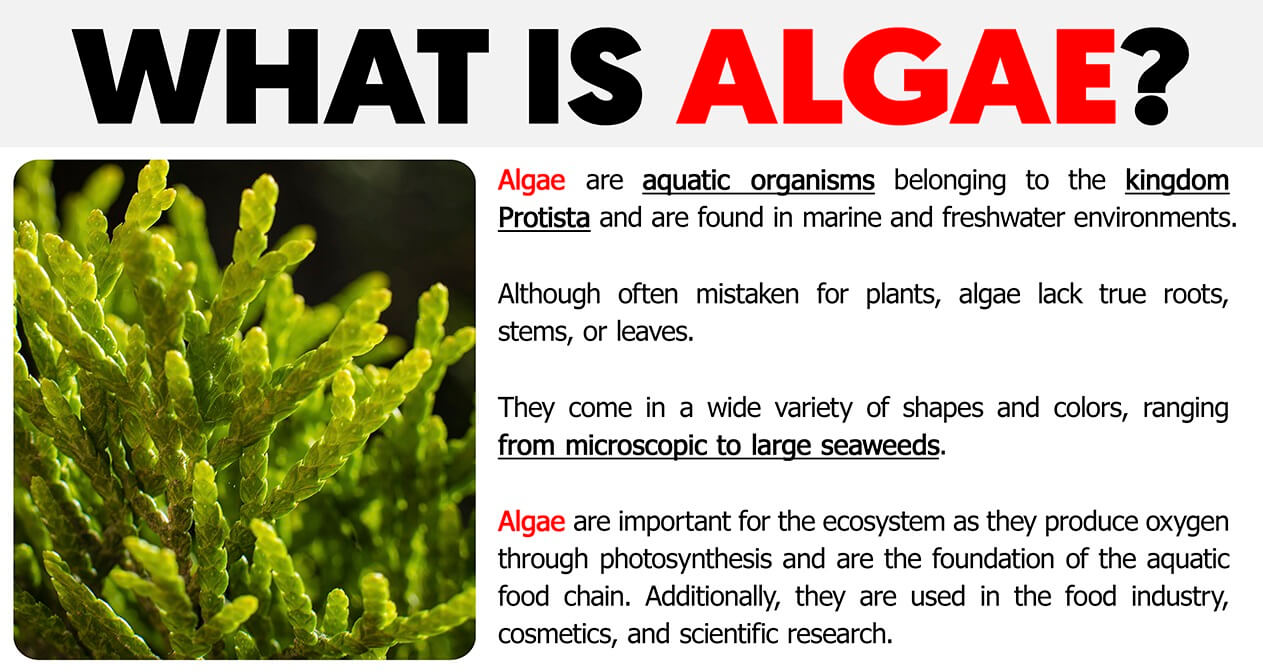
Algae are a diverse group of aquatic organisms that can be found in both saltwater and freshwater environments.
In home aquariums, the most common types of algae are:
-
Green algae – This includes hair algae, green spot algae, green dust algae and green water algae. Green algae contain chlorophyll and require light to photosynthesize. They can rapidly spread in aquariums when there is excess light and nutrients.
-
Brown algae – Also called diatoms, these are microscopic, brown-colored algae. They commonly show up in new tanks or when silicate levels are high. Brown algae often manifest as a brown film on surfaces.
-
Blue-green algae – These algae are actually cyanobacteria, not true algae. They can form thick green or blue-green blooms and mats. Some species release toxins and can be harmful to fish.
-
Red algae – This includes brush or beard algae, which has a red appearance. It attaches to surfaces like plants and decor. Too much iron, low CO2, and poor water flow can cause red algae growth.
Algae growth needs to be controlled in aquariums, as excessive algae can negatively impact water quality and be difficult to remove once established. Proper aquarium maintenance and balance helps keep algae in check.
Do Goldfish Eat Algae?
Yes, goldfish do eat certain types of algae, but there are some species that they don’t consume. Goldfish are omnivorous and will eat both plant and animal matter, including algae. Some of the common algae that goldfish readily eat include green algae, brown algae and soft black beard algae.
However, there are certain tougher species of algae that goldfish tend to avoid, such as black brush algae and staghorn algae. While they may nibble at these varieties, goldfish don’t effectively control or eradicate them. Goldfish have small specialized teeth that are adapted for rasping algae off surfaces, but some types of algae are too difficult for them to efficiently feed on.
So in summary, goldfish do eat some algae as part of their natural diet, and can help control algal growth in aquariums. But they have preferences for softer green algae and likely won’t eliminate all types from an aquarium on their own. Providing a balanced diet with algae wafers or blanched vegetables is recommended.
Benefits of Eating Algae
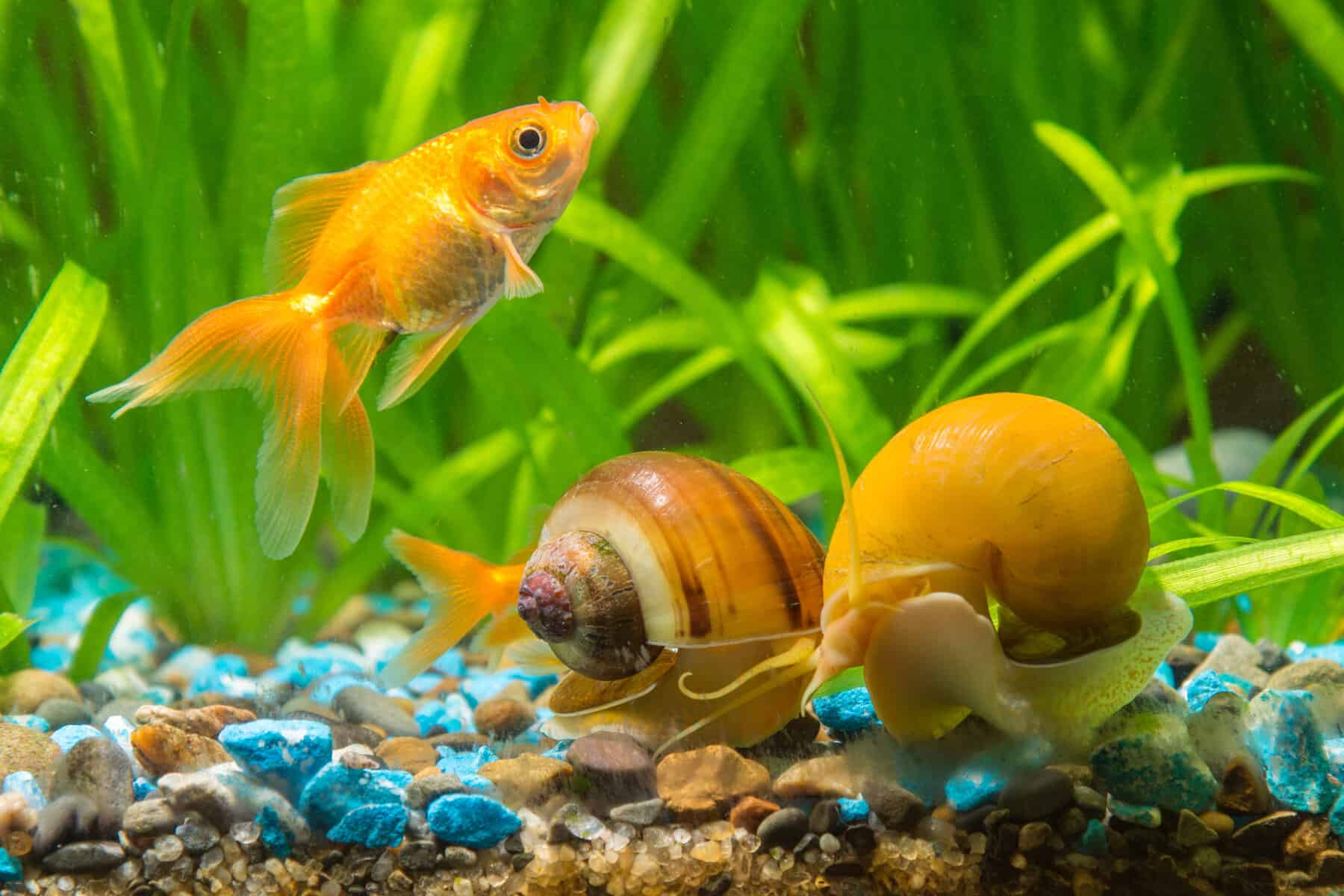
Algae can provide some nutritional benefits for goldfish. Certain types of algae contain proteins, vitamins, and trace minerals that can complement the diet of goldfish. Eating small amounts of algae allows goldfish to forage naturally and get nutrients they may miss from prepared foods.
One of the main benefits of goldfish eating algae is that it helps keep the tank clean. Goldfish love munching on many common aquarium algae, like hair algae and diatom algae. Their constant grazing can prevent algae overgrowth and keep tank surfaces free of buildup. Allowing goldfish to eat algae creates a more natural environment and reduces the need for manual algae scrubbing and cleaning.
Potential Downsides
Some types of algae can actually be toxic to goldfish if consumed in large quantities. Certain algae like blue-green algae can release toxins into the water that can sicken or even kill goldfish. Feeding goldfish a diet too high in algae can also lead to overfeeding, causing swim bladder disorder, constipation, or other digestive issues.
It’s important to feed goldfish a balanced diet with algae as just one component. Too much algae can be unhealthy for goldfish.
Best Algae for Goldfish
Goldfish can safely eat certain types of algae, including green algae and brown algae. However, there are some algae types that should be avoided as they can be harmful to goldfish health.
Some of the best algae to cultivate for goldfish to eat include:
-
Green Algae – This includes common green algae varieties like Spirogyra, Oedogonium, and Cladophora. Green algae provides protein and fiber. It is generally safe for goldfish to consume.
-
Brown Algae – Diatoms are a type of brown algae that frequently grow in aquariums. They are rich in nutrients and make a good supplementary food source. However, large brown algae growths should be controlled.
-
Soft Green Algae – Soft green algae like Ulva are soft and easy for goldfish to eat. They provide protein, vitamins, and minerals. However, Ulva can quickly take over a tank if not controlled.
It’s best to cultivate a mix of soft green algae and diatoms for goldfish. Avoid blue-green algae and black beard algae as they can be toxic. Excessive algae growth should be trimmed and controlled. Offering a variety of algae types provides enrichment and nutrients.
Cultivating the Right Algae
Goldfish thrive on eating certain types of algae in their habitat. The key is cultivating the optimal algae growth to provide a natural food source without overrunning the tank.
This provides some helpful tips:
-
Start by seeding the tank with green algae from an existing tank or sample. This kickstarts the algae growth.
-
Allow green algae blooms to occur naturally. Resist cleaning all of it out, as this is healthy for goldfish.
-
Ensure adequate lighting of 8-10 hours per day. Moderate lighting encourages green algae growth.
-
Use an aquarium plant fertilizer or introduce a small amount of fish food to increase nutrients. Algae feeds on the excess nutrients.
-
Perform partial weekly water changes but don’t scrub all algae away. Leave some to continue multiplying.
-
Introduce fast-growing stem plants. As they uptake nutrients, they reduce algae growth to more manageable levels.
With the right tank conditions and patience, green algae can thrive and create the ideal natural grazing environment for goldfish. Monitoring growth and nutrients is key to maintaining balance.
Feeding a Balanced Diet
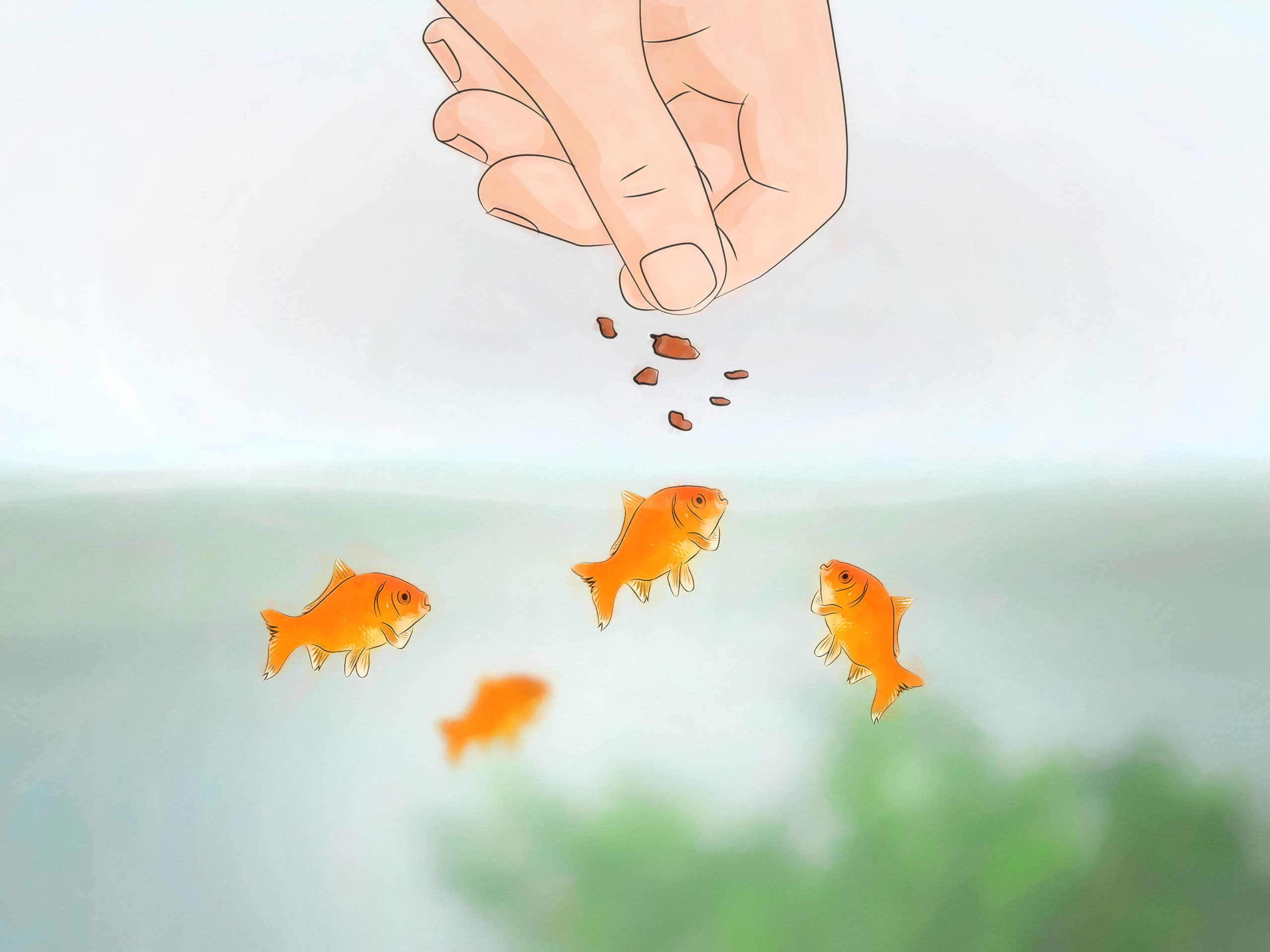
While algae can be a healthy part of a goldfish’s diet, relying on algae alone is not enough to meet a goldfish’s nutritional needs. Goldfish benefit from a varied diet that includes both plant and animal matter.
It’s best to feed goldfish a combination of quality fish flakes or pellets along with treats like vegetables, fruits, and algae wafers. High quality fish food provides balanced nutrition with protein, vitamins, and minerals. Algae and vegetables add fiber and plant nutrients.
Aim to feed goldfish small amounts 2-3 times per day. Varying their diet keeps goldfish healthy and brings out their best colors. While algae can supplement their nutrition, goldfish need more than just algae to thrive. Feeding a thoughtful mix of fish food, veggies, and algae will keep goldfish energetic and satisfied.
Controlling Excess Algae
While goldfish may help control some algae growth in your tank, relying solely on them can lead to excess algae taking over. There are several other effective methods for controlling algae growth beyond just using goldfish.
One of the best ways to control algae is through filtration. A high-quality filtration system will help remove excess nutrients from the water that can feed algal growth. Make sure to clean filter media regularly, as dirt and debris can accumulate and release phosphates back into the tank water, fueling more algae. Powerful water circulation from filter outflows can also help disrupt algal growth and prevent dense algae accumulations on surfaces.
Using chemical algaecides can provide a quick fix for tackling existing algae growth, but they don’t address the underlying cause of excess nutrients driving the algae. Chemical algaecides should be used sparingly and according to package directions to avoid harming fish.
Adding algae-eating snails like nerites can be an effective and natural way to control algae. The snails will graze on many common aquarium algae types. However, their populations also need to be monitored and controlled to prevent overrunning the tank. Other algae eaters like shrimp and otocinclus catfish are also options.
Regular tank maintenance through gravel vacuuming, wiping down surfaces, and water changes helps remove established algae and limits nutrient accumulation that allows new growth. Following proper aquarium lighting schedules and avoiding direct sunlight on the tank will also help deter algae. Finding the right balance through multiple control methods is key for tackling excess algae.
Conclusion
In summary, algae can be an excellent supplementary food source for goldfish if provided in moderation.
The key benefits of algae for goldfish include:
-
Algae provides protein, fiber, vitamins, and minerals. Spirulina and chlorella are especially nutritious options.
-
Grazing on algae mimics natural goldfish behaviors and supports digestive health.
-
Certain algae helps enhance goldfish color. Spirulina boosts red/orange tones.
However, too much algae can negatively impact water quality and goldfish health.
It’s important to find the right balance through:
-
Cultivating the most beneficial algae strains and discouraging nuisance algae.
-
Feeding a varied diet, with algae as just one component. Pellets, vegetables, and live foods are also key.
-
Monitoring algae growth and manually removing excess to prevent unchecked blooms.
With the proper care and feeding regime, algae can be a boon for goldfish owners looking to enhance nutrition, coloration, and natural behaviors in their fish. Moderation and variety is key when incorporating algae into the goldfish diet.
